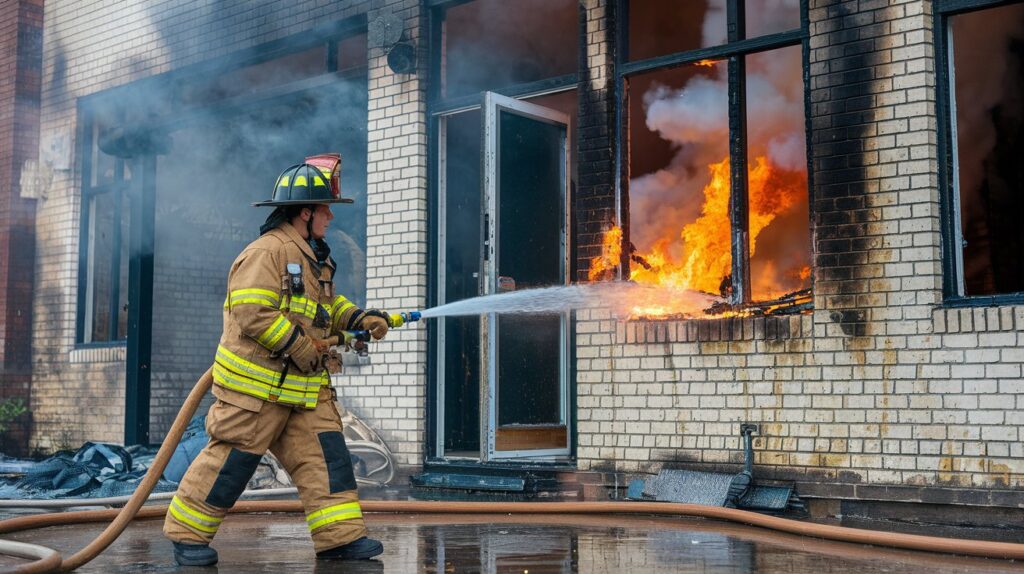When most people think about fire safety, the first thing that comes to mind is water. Sprinklers going off, fire extinguishers being used, or firefighters spraying huge streams of water onto buildings. But there’s something even more dangerous than flames during a fire-and that’s smoke. Smoke can spread faster than fire, and it can make it hard to breathe or even see the way out. That’s why smart buildings use more than just sprinklers. They also need systems that deal with smoke, heat, and airflow to keep people safe.
Smoke Is a Bigger Problem Than Most People Think
In many fires, it’s not the flames that cause the most harm-it’s the smoke. Thick smoke fills rooms quickly, blocks escape routes, and can knock people out before they ever reach the door. That’s why buildings are designed to let smoke out in a controlled way. If smoke has a way to rise and leave the space, it gives people more time to get to safety and helps firefighters see what they’re doing.
This is where natural smoke ventilators come in. These are vents-usually placed in the roof or high up on walls-that open automatically when smoke and heat build up. They don’t need electricity or a person to push a button. They open on their own, using heat or pressure, and let the smoke rise out of the building naturally.
The Role of Heat in How Fires Spread
Fire gives off a lot of heat, and that heat rises fast. The hotter it gets, the more dangerous the space becomes-not just because of burns, but because of how heat messes with air quality and structure. Heat can damage building materials, cause ceilings to collapse, or even break windows. It can also make escape impossible if it spreads too quickly through upper floors.
That’s another reason why controlling airflow matters. If heat and smoke can move out quickly through the top of the building, the lower areas stay clearer for longer. That can mean the difference between being able to run out safely or getting stuck.
Why Sprinklers Alone Aren’t Enough
Sprinklers are great at stopping fire from spreading, but they don’t do much about smoke. They spray water down, which cools the fire and keeps it from growing, but they don’t pull the smoke out. In fact, sometimes the water turns into steam, which can make visibility even worse.
This is why smoke control systems are often built alongside sprinkler systems. You need something that handles the flames and something that handles the smoke. Together, they give people the best chance of getting out safely. One clears the air, and the other puts out the fire.
How Natural Ventilation Keeps Things Working
Some people think you always need fancy machines or electric fans to move smoke out, but that’s not true. Natural smoke ventilators use basic science-hot air rises. When smoke builds up, it naturally wants to move up and out. These vents just give it a place to go.
Once open, they let fresh air move in at the bottom of the space, while the smoke escapes out the top. This keeps the lower level safer and clearer for anyone still inside. Because they work without needing power, they’re also reliable during blackouts or electrical damage from the fire.
When and Where Ventilators Make the Most Sense
Natural smoke vents are usually used in places with high ceilings or large open spaces. Think schools, warehouses, sports halls, shopping centres, or offices. In any of these places, if there’s a fire, people need time to get out-and these systems help buy them that time.
They’re also built into the roof design in a way that doesn’t mess with the building’s look. So they work in both new builds and older buildings getting an upgrade. Fire safety isn’t just about adding more alarms or sprinklers-it’s about thinking of how people move, how air moves, and what’s needed to keep that movement safe.
Thinking About Fire Safety as a Whole
It’s easy to assume fire safety starts when the alarm rings and ends when firefighters show up, but that’s not how it works. Real safety starts when a building is being planned. Designers think about how fires could spread, where smoke might go, and how to make it easier for people to get out. They add alarms, sprinklers, signs, escape routes-and they also think about how the air inside the building needs to move in an emergency.
Natural smoke ventilation is one of those things that doesn’t seem important until it really matters. You might never even notice it’s there, but in the middle of an emergency, it can be the one thing that keeps people safe. It clears the air. It makes exits visible. It protects stairways. And it gives rescue teams a better shot at doing their job.
What This All Comes Down To
Staying safe in a fire isn’t just about stopping the flames. It’s about seeing clearly, breathing clearly, and getting out in time. Smoke is sneaky-it fills up rooms, blocks exits, and makes it hard to think straight. That’s why buildings need more than just fire alarms and sprinklers. They also need smart systems that handle smoke on their own, without anyone needing to press a button or flip a switch.
So next time you walk into a big building, look up. Those vents near the roof might seem small or boring, but they’re doing something really important. They’re one of the reasons that space is safe to be in, even if something goes wrong.

